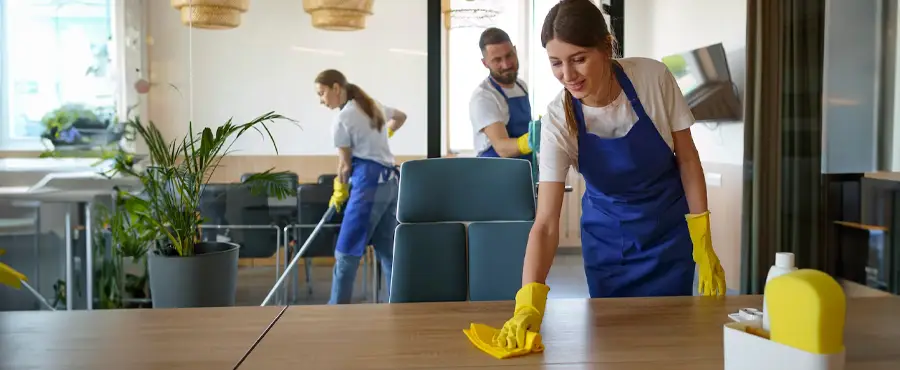Commercial Housekeeping Schedule
Creating an effective housekeeping schedule for your commercial cleaning contracts is crucial to maintaining cleanliness, hygiene, and a professional appearance. Here’s a step-by-step guide to help you establish a housekeeping cleaning schedule.
Assess Your Commercial Space:
- Begin by thoroughly assessing the commercial space. Identify all the areas that require cleaning, including restrooms, common areas, offices, conference rooms, breakrooms, and any specialized spaces unique to your business.
Determine Cleaning Frequency:
- Decide how often each area needs to be cleaned. The frequency may vary based on factors like foot traffic, the nature of the business, and health and safety requirements. For instance, high-traffic areas may require daily cleaning, while others can be cleaned less frequently.
Create a Detailed Cleaning Checklist:
- Develop a comprehensive cleaning checklist for each area. Specify the cleaning tasks required for each space, including vacuuming, dusting, mopping, disinfecting, restocking cleaning supplies, and emptying trash bins. Be specific about what needs to be cleaned and how.
Assign Responsibilities:
- Clearly define who is responsible for each cleaning task. This could be in-house janitorial staff, a contracted cleaning service, or even employees taking on certain responsibilities. Ensure everyone understands their roles and duties.
Establish a Cleaning Schedule:
- Create a cleaning schedule that outlines when each cleaning task will be performed. Specify the day, date, and time for each cleaning. Consider your business hours and peak times to minimize disruptions.
Prioritize High-Traffic Areas:
- Give priority to high-traffic and frequently used areas, such as entranceways, restrooms, and common spaces. These areas may require more frequent cleaning to maintain cleanliness and hygiene.
Consider Seasonal and Special Cleaning Needs:
- Account for seasonal cleaning needs or special occasions, such as deep cleaning before a big event or addressing specific challenges related to different seasons (e.g., mud and salt during winter).
Allocate Resources:
- Ensure that you have the necessary cleaning equipment, supplies, and personnel to execute the schedule effectively. This includes vacuum cleaners, mops, cleaning agents, disinfectants, trash bags, and PPE.
Implement Quality Control Measures:
- Establish a system for monitoring and maintaining cleaning quality. Regular inspections and feedback sessions can help ensure that cleaning standards are consistently met.
Adapt and Adjust:
- Periodically review and adjust your cleaning schedule based on feedback, changing business needs, or evolving cleaning requirements.
Communicate with Staff:
- Make sure all employees are aware of the cleaning schedule and its importance. Encourage them to report any cleanliness issues they observe promptly.
Training for Cleaning Staff:
- If you have an in-house cleaning team, provide them with appropriate training on cleaning techniques, safety protocols, and the use of cleaning equipment and chemicals.
Prioritize Safety:
- Place a strong emphasis on safety for your cleaning staff and others in the vicinity. Ensure they are aware of safety procedures and have access to necessary safety equipment.
Documentation and Record-Keeping:
- Maintain records of your cleaning schedules, completed tasks, and any incidents or issues that arise. These records can be valuable for compliance, quality assurance, and future reference.
By following these steps and maintaining an organized and consistent housekeeping cleaning schedule, you can ensure that your commercial space remains clean, hygienic, and welcoming to employees, customers, and visitors.




